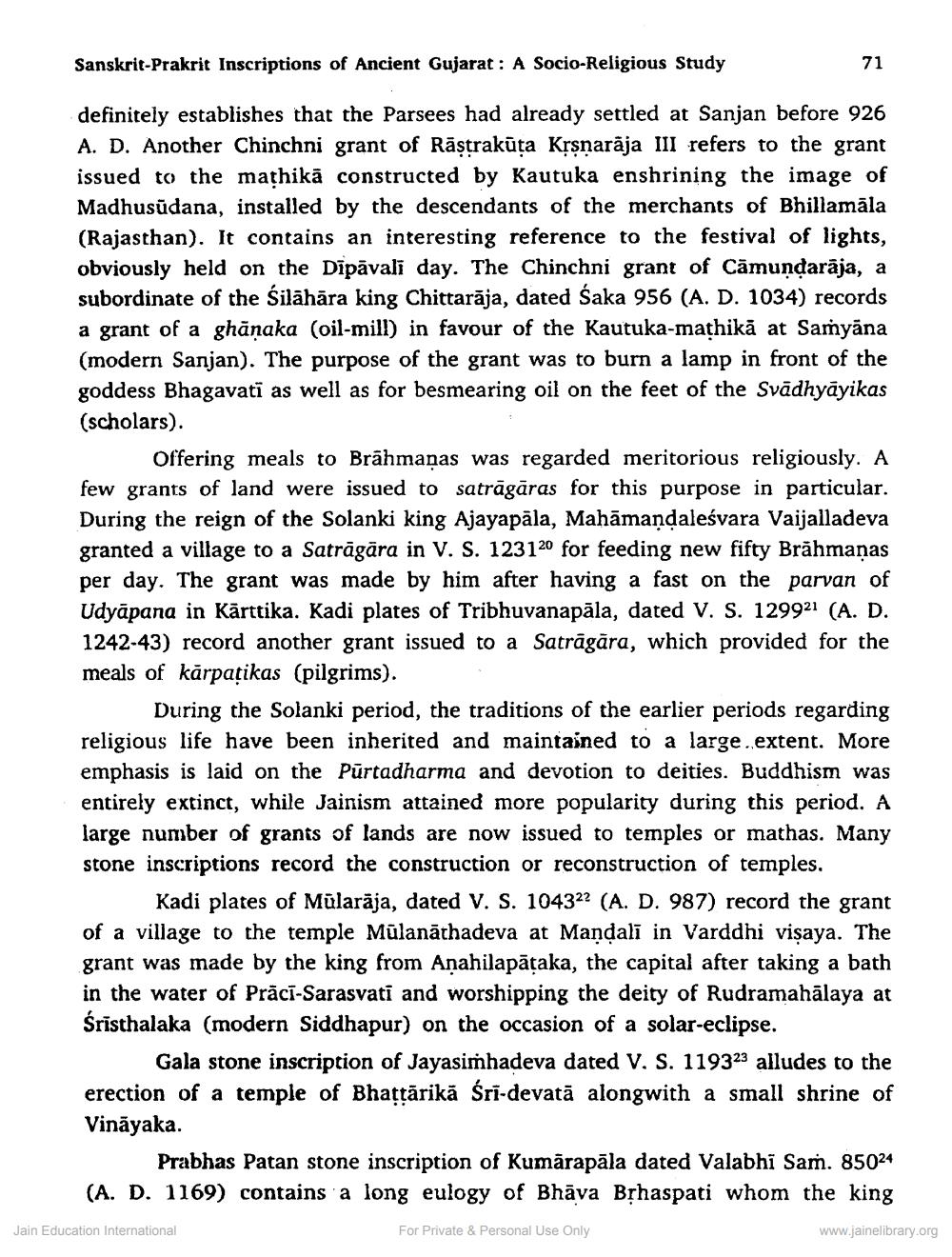________________
Sanskrit-Prakrit Inscriptions of Ancient Gujarat: A Socio-Religious Study
definitely establishes that the Parsees had already settled at Sanjan before 926 A. D. Another Chinchni grant of Rāṣṭrakūta Kṛṣṇarāja III refers to the grant issued to the mathikā constructed by Kautuka enshrining the image of Madhusudana, installed by the descendants of the merchants of Bhillamāla (Rajasthan). It contains an interesting reference to the festival of lights, obviously held on the Dīpāvalī day. The Chinchni grant of Camuṇḍarāja, a subordinate of the Silahāra king Chittarāja, dated Śaka 956 (A. D. 1034) records a grant of a ghāṇaka (oil-mill) in favour of the Kautuka-maṭhikā at Samyāna (modern Sanjan). The purpose of the grant was to burn a lamp in front of the goddess Bhagavati as well as for besmearing oil on the feet of the Svādhyāyikas (scholars).
71
Offering meals to Brāhmaṇas was regarded meritorious religiously. A few grants of land were issued to satrāgāras for this purpose in particular. During the reign of the Solanki king Ajayapāla, Mahāmaṇḍaleśvara Vaijalladeva granted a village to a Satrāgāra in V. S. 123120 for feeding new fifty Brāhmaṇas per day. The grant was made by him after having a fast on the parvan of Udyapana in Kärttika. Kadi plates of Tribhuvanapāla, dated V. S. 129921 (A. D. 1242-43) record another grant issued to a Satrāgāra, which provided for the meals of karpatikas (pilgrims).
During the Solanki period, the traditions of the earlier periods regarding religious life have been inherited and maintained to a large extent. More emphasis is laid on the Purtadharma and devotion to deities. Buddhism was entirely extinct, while Jainism attained more popularity during this period. A large number of grants of lands are now issued to temples or mathas. Many stone inscriptions record the construction or reconstruction of temples.
Kadi plates of Mūlarāja, dated V. S. 104322 (A. D. 987) record the grant of a village to the temple Mūlanathadeva at Mandali in Varddhi viṣaya. The grant was made by the king from Aṇahilapāṭaka, the capital after taking a bath in the water of Praci-Sarasvati and worshipping the deity of Rudramahālaya at Śrīsthalaka (modern Siddhapur) on the occasion of a solar-eclipse.
Gala stone inscription of Jayasimhadeva dated V. S. 119323 alludes to the erection of a temple of Bhaṭṭārikā Śrī-devatā alongwith a small shrine of Vinayaka.
Prabhas Patan stone inscription of Kumarapala dated Valabhi Sam. 85024 (A. D. 1169) contains a long eulogy of Bhava Bṛhaspati whom the king
Jain Education International
For Private & Personal Use Only
www.jainelibrary.org




